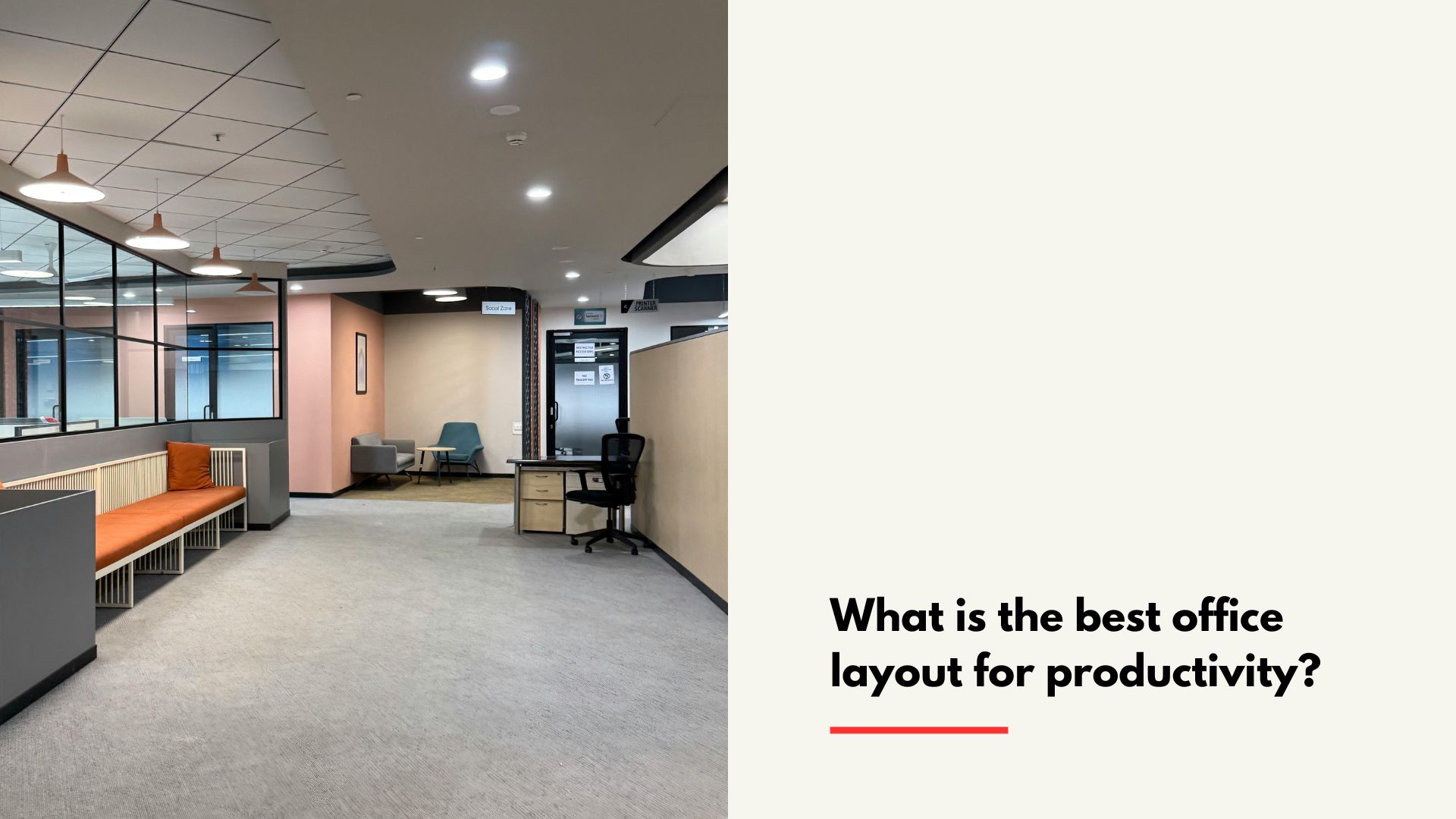The quest for the “best” office interior design and layout is one of the most enduring challenges in modern business. It’s a design dilemma that pits the collaborative energy of open-plan spaces against the focused concentration of private offices. The truth, however, is that there is no single, one-size-fits-all answer. The ideal layout for maximizing productivity is not a pre-packaged solution, but a carefully engineered equilibrium—a hybrid ecosystem that supports diverse work styles, company culture, and the nature of the work itself.
The Great Debate: Open-Plan vs. Private Offices
For decades, the conversation has been dominated by two opposing philosophies: the sprawling, barrier-free Open-Plan Office and the segmented, hierarchical Private Office/Cubicle Layout.
The Case for Open-Plan: Collaboration & Cost Efficiency
The open-plan design was born from a desire to foster transparency, spontaneity, and teamwork. By eliminating walls, it encourages quick, informal chats, which can lead to faster problem-solving and shared innovation. It is also often a more cost-effective and space-efficient solution, accommodating more employees in a smaller footprint—a major advantage in high-rent urban areas.
- Pros: Increased collaboration, cost efficiency, flexibility for scaling, greater visibility of teams.
- Cons: High noise levels, frequent visual and auditory distractions, lack of privacy, potential for increased stress and the spread of illness. Studies consistently show that noise is the single biggest productivity killer in open offices.
The Case for Private Spaces: Focus & Confidentiality
Traditional cubicles and private offices cater to the need for deep, uninterrupted focus. For roles that require long stretches of concentration, handling sensitive data (like HR or legal), or frequent confidential calls, a walled-off space drastically reduces distractions. The ability to control one’s own environment—lighting, noise, temperature—is a powerful driver of individual productivity.
- Pros: Enhanced focus for deep work, privacy for confidential tasks, fewer distractions, greater personal control over the environment.
- Cons: Can lead to silos and reduced spontaneous interaction, less space-efficient, can reinforce hierarchical structures.
The Modern Solution: Activity-Based Working (ABW)
The most productive modern office design moves beyond the binary choice of open vs. private. The current consensus points toward Activity-Based Working (ABW), a dynamic, hybrid layout that recognizes employees engage in multiple types of work throughout the day, each requiring a different setting.
An ABW model provides a menu of workspaces, allowing employees to choose the environment best suited to their current task:
- “Huddle Rooms” and Collaboration Zones: Small, informal meeting areas with whiteboards and tech hookups, perfect for quick team syncs and spontaneous brainstorming.
- Quiet Zones / Focus Pods: Dedicated, sound-proofed areas, often with acoustic panels and “do not disturb” protocols, for tasks that require intense concentration. These are non-negotiable for mitigating the noise drawbacks of an open floor plan.
- Individual Workstations (Hot Desks or Dedicated): General areas for administrative and routine tasks.
- Breakout Spaces / Cafes: Comfortable, relaxed, social areas designed for mental recharge, informal mingling, and non-work discussions. Movement and rest are critical for sustained productivity.
The core philosophy of ABW is simple: Choice and Flexibility. By giving employees autonomy to choose their environment, you empower them to manage their own productivity and focus.
Key Design Elements That Universal Boost Productivity
Regardless of the primary layout chosen, several fundamental design elements are scientifically proven to enhance well-being, mood, and, ultimately, output. Incorporating these features is essential for turning a functional space into a truly productive one.
Biophilic Design and Natural Light
Bringing the outdoors in is not a trend; it’s a science-backed necessity. Access to natural light is the number one attribute workers want, as it regulates circadian rhythms, reduces eye strain, and can boost productivity by up to 16%.
- Actionable Tips: Maximize large windows, use glass partitions instead of opaque walls, and incorporate live plants (biophilic design) which can reduce stress and boost creativity.
Acoustics and Noise Control
Since noise is the main enemy of deep work, acoustical planning must be a priority. An open office with poor acoustics is an instant failure.
- Actionable Tips: Install acoustic panels on walls and ceilings, use soft finishes like carpets and rugs to absorb sound, and invest in high-quality focus pods or phone booths for calls and private meetings.
Ergonomics and Well-being
A comfortable, healthy employee is a productive employee. Investing in the physical comfort of your team is a direct investment in your bottom line.
- Actionable Tips: Provide ergonomic chairs with lumbar support, offer adjustable sit-stand desks to encourage movement, and ensure proper monitor height to reduce neck and back strain.
Colour Psychology
The colours in your office have a subtle but powerful psychological effect.
- Actionable Tips: Blues and greens promote a sense of calm and concentration (ideal for focus zones). Yellows stimulate creativity and optimism (good for brainstorming rooms). Reds increase energy and urgency (best used sparingly in high-traffic areas or for accents).
Organization and Decluttering
A cluttered workspace leads to a cluttered mind. Simple, thoughtful organization is key.
- Actionable Tips: Integrate sufficient, accessible storage (lockers, drawers) to keep desks clear. A minimalist design ethos, while not universally required, helps reduce visual noise and encourages a sense of calm.
The Office as a Tool, Not a Container
The best office layout for productivity is one that functions not merely as a container for employees, but as a highly flexible, choice-driven tool that empowers them to do their best work. It is not the “open office” or the “private office,” but the Hybrid, Activity-Based Office.
By balancing the need for focused, heads-down work with the desire for energized, spontaneous collaboration, and by ensuring the core human needs for light, quiet, comfort, and movement are met, you create an environment where productivity isn’t forced, but naturally cultivated. Ultimately, the best layout is one that constantly adapts to the people and the purpose it serves.
